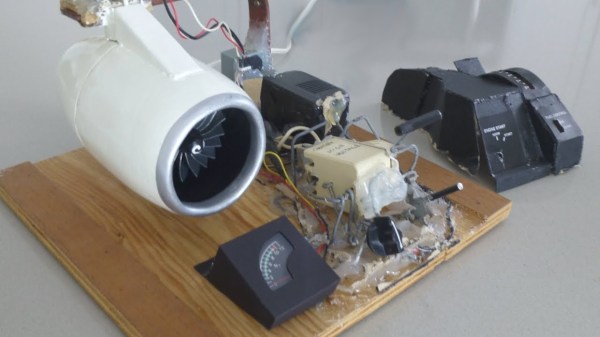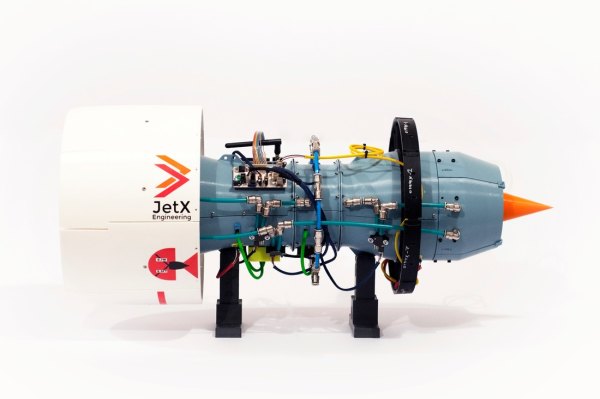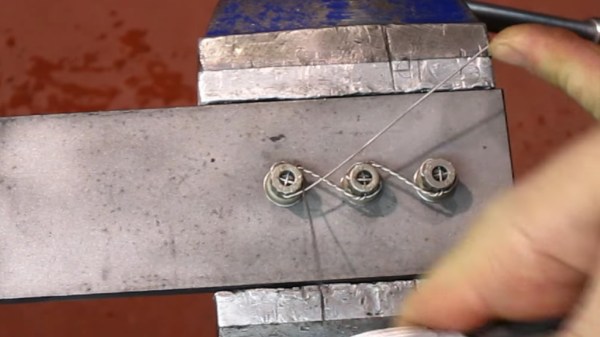[InterlinkKnight]’s jet engine model is a delight to behold and to puzzle out. Many of us have been there before. We know how to build something, we know it’s not the most up-to-date approach, but we just can’t help ourselves and so we go for it anyway. The result is often a fun and ingenious mix of the mechanical and the electrical. His electric jet engine model is just that.
Being a model, this one isn’t required to produce any useful thrust. But he’s made plenty of effort to make it behave as it should, right down to adding a piece of plastic to rub against a flywheel gear in order to produce the perfect high-pitched sound, not to forget the inclusion of the flywheel itself to make the turbine blades gradually slow down once the motor’s been turned off. For the N1 gauge (fan speed gauge) he built up his own generator around the motor shaft, sending the output through rectifying diodes to a voltmeter.
But the most delightful of all has to be the mechanical linkages for the controls. The controls consist of an Engine Start switch, Fuel Control switch and a throttle lever and are all built around a rheostat which controls the motor speed. The linkages are not pretty, but you have to admire his cleverness and just-go-for-it attitude. He must have done a lot of head scratching while getting it to all work together. We especially like how flipping the Fuel Control switch from cutoff to run levers the rheostat with respect to its dial just a little, to give a bit of extra power to the engine. See if you can puzzle it out in his Part 3 video below where he removes the cover and walks through it all.
Continue reading “Delightful Electromechanical Build Of A Jet Engine Model”







 The firing assembly in the jet comes from a Nerf Rival Zeus Blaster, which is itself an interesting device. It uses two electric flywheels to launch soft foam balls – much like a pitching machine. With one flywheel running a little faster than the other, the trajectory can be modified. For example, a slight topspin gives the balls a longer and more stable flight path. Of course, foam balls slow down quickly once launched and at high speeds the aircraft can overtake the same projectiles it just fired, but it’s fun all the same.
The firing assembly in the jet comes from a Nerf Rival Zeus Blaster, which is itself an interesting device. It uses two electric flywheels to launch soft foam balls – much like a pitching machine. With one flywheel running a little faster than the other, the trajectory can be modified. For example, a slight topspin gives the balls a longer and more stable flight path. Of course, foam balls slow down quickly once launched and at high speeds the aircraft can overtake the same projectiles it just fired, but it’s fun all the same.










